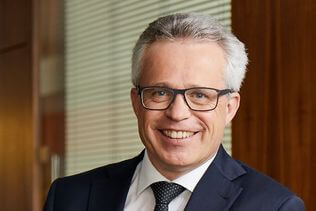In this blog, we answer some common questions and share some tips to get your patent strategy off the ground and help your startup take flight.
Can I get a Patent for my Invention?
Patents are granted for new, non-obvious and useful inventions. Generally speaking, an invention is a technical solution to a technical problem. Business ideas or other abstract ideas, on the other hand, are not regarded as patentable. However, the word invention must be understood broadly - not just inventions as revolutionary as the light-bulb and the transistor are patentable. Small advances to existing technologies form the bulk of granted patents, and every day, thousands of such patents are granted world-wide.
Tip: Think about the technical problem your invention solves and the difficulties you encountered while developing it – this can give you vital clues as to which parts could be patentable and worth protecting.
Tip: Software is also open to patent protection. As software plays an increasing role in many products and services, many companies are making use of the patent system to protect their software innovations. In particular, artificial intelligence has proven to be a technology with many applications. See our blog post for more details: How to Protect your AI Innovations with a Patent: Updated EPO Guidelines
What does a Patent give the Holder?
A patent grants the holder the right to stop others from exercising the patented invention. Though some international harmony exists in how patents are examined and enforced, patents remain national rights and therefore you will need a patent in those jurisdictions in which you wish to protect your invention.
Tip: You don't necessarily need patents in all jurisdictions – often having patents in a few jurisdictions relating to your key markets is enough to secure your invention.
How to Search for Existing Patents
A patent search is best performed before developing or launching a new product and can also be useful for market research. There are several powerful and free search engines available: we recommend Espacenet from the European Patent Office (EPO). Enter your search terms and scan the abstracts and figures to quickly get an idea if the result could be of relevance for your product.
Tip: Be sure to check the applicable jurisdiction of each document, as denoted by the first two letters of the publication, as well as the applicant.
Tip: There can be major differences between what is applied for and what is eventually granted, so remember to check the last two symbols of the publication number. For example, the 'A' publication EP2616147A1 refers to a European patent application published 24 July 2013 relating to an airbag rescue system, while the 'B' publication EP2616147B1 refers to the European patent as granted on 1 January 2019. The greatest differences are usually found in the Claims, which define the scope of protection and are often narrowed during grant proceedings.
The Swiss Patent Office (IGE) also offers an Assisted Patent Search, which is available to innovative SMEs, startups, individual inventors, and public research institutes. For CHF 300 (current fee) you can sit together with a professional from the IGE performs and conduct an initial basic search on your invention to get an impression of the state of the art. It takes half a day and at the end you will have a list of results and a basis for next steps.
Tip: For a more comprehensive patent search or to discuss and evaluate the results of your search, we recommend contacting a patent lawyer with expertise in your field of technology.
What to Disclose When
The patentability of your invention has to do with whether it is new, non-obvious and useful. The requirement of novelty is paramount, and the prior art search will give you an idea of whether your invention has already been publicly disclosed.
It is vital to remember that public disclosure also relates to what you yourself tell others about your invention, for example what you tell potential investors or customers, what you present at conferences or conventions, and what you publish on the internet.
Tip: Keep as much of your invention to yourself as possible until you have filed your first application. If you must talk about your invention, we suggest talking about it only in general terms and/or having NDAs signed by all participants.
Freedom to Operate
Whether your invention may infringe patents of third parties is also worth clarifying before you launch your product and is best done by a patent lawyer. A comprehensive freedom-to-operate search and opinion can be very time-consuming and costly to perform, however, given the large number of granted patents in existence, so a compromise may have to be made.
Tip: For startups a cost-effective and pragmatic approach can be best: focus on the granted patents your competitors hold and keep an eye on their pending patent applications.
Where should I File first?
Filing a first application for your invention at the Swiss Patent Office is a good idea, regardless of where you will eventually want to seek patent protection. The official fees are low and if you choose to have a search performed you will receive a good quality search report often within months of filing, depending on the type of search you choose.
This first application is a so-called priority founding application and within twelve months of the filing date you can file subsequent applications for the same invention in other countries. Making use of the international Patent Cooperation Treaty (PCT) or filing a European patent application with the EPO is recommended to streamline your subsequent applications. The twelve months also gives you breathing room so you can take into account tweaks to your invention and also strategically file subsequent patent applications.
Tip: To save costs with a subsequent European patent application, make sure to apply for an International-Type search with your first Swiss application. This is carried out by the EPO on behalf of the Swiss Patent Office, and when you file your subsequent European patent application, the search report will be recognized and the search fee can be partially refunded.


